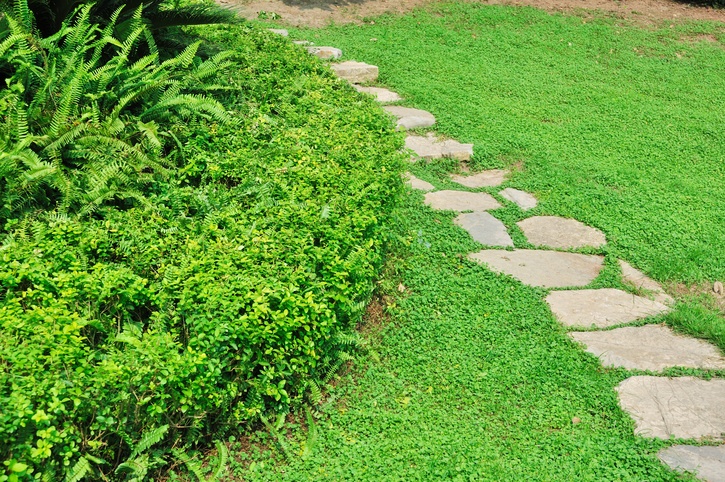A great addition to every backyard is of course a Cook Portable Warehouse. With dependable storage options in every size, a backyard shed from Cook is the best solution when you need additional storage space. Build the shed of your dreams with this tool from Cook.
Another relatively easy backyard project that many homeowners can add is a path either leading from the home to the shed, garage, or pool. Not only will a high-quality backyard path add value to your home, it will also make it easy to get back and forth.
And once you have the path, next you will need to add a fire pit. It’s the perfect way to enjoy the outdoors in the brisk fall weather. Check out our three keys to building one of your own.
One of the biggest decisions when it comes to constructing a backyard path to your shed is what material you will use. There are a variety of high-quality options (from hard to soft surfaces). The decision could come down to your practicality, budget, and the appearance of your current exterior decor.
Consider using materials that blend seamlessly into your existing house and other surrounding structures. You also want to think about the purpose and location of the path.
Here are 5 ideas for the surface of your new backyard path to meet every budget and skill level.

Gravel and crushed stone
Gravel and small stone provide a low-cost, fast-draining surface. These nonslip materials are easy to install and come in a variety of colors and sizes. Purchase in bulk by the ton or cubic yard to save more money with this option.
Edging might be required to keep the stones or gravel in place and the path will need to be raked routinely to rid the surface of leaves, sticks, and other debris.
Mixed materials
Mixed materials like brick, ceramic tile and broad stones, create a bold look and provides an even, nonslip surface. Other more traditional paving combinations include stepping-stones, brick, and gravel.
Test a few different materials by purchasing samples before committing to one option.
Brick
Brick is a great option because it can be laid in many different patterns; just make sure to choose paving bricks rather than wall bricks. This surface provides an affordable, low maintenance option that is also durable, especially in cold and wet climates.
It’s important with brick to install a stout steel or plastic edging to keep the bricks contained and prevent movement from heavy use.
Mulch
A mulch path, which includes bark, pine needles, or sawdust, is best used for more informal, natural paths in low-traffic areas. Mulch provides an earthy, casual look, so choose a material that fits your outside environment.
Remember if you choose organic mulch it will eventually decompose, so the path will have to be added to over time.
Stone
Stone provides an elegant path surface, but is also one of the most expensive and difficult to install options. Stones can be set in sand or in concrete with mortar joints, although the later should be installed by a professional.
Most stone can be cut into irregular shapes and sizes, but the most popular shape choices are square or rectangle. Native stones are also a good option that blends well into natural surroundings.
To download more great resources from Cook Portable Warehouses, visit this page. And to get additional ideas of converting your building and landscape into the space of your dreams, download the free guide below!
{{cta(’98e2a5fe-1063-44ef-9959-bd526bf89ce5′,’justifycenter’)}}
